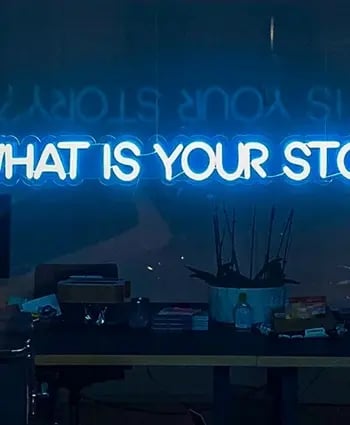The Growth of Ephemeral Video Content: The Rise and Reign of 'Stories'
Dive into ephemeral video's allure, why brands love it, and its future. Explore the 'Stories' format's meteoric rise and evolving trends
We're living in a digital age where the paradoxical blend of permanence and transience defines our online experiences. We want our messages to last forever, yet we also cherish those fleeting moments that disappear after a short glimpse. This latter phenomenon has birthed a trend that's been nothing short of revolutionary — ephemeral video content, epitomised by the 'Stories' format. So, why have these transient video snippets captivated millions, and what's driving their meteoric rise?
Ephemeral Video Content: A Quick Intro
Before diving deep, let's clarify what we're talking about. Ephemeral content, by definition, is short-lived. In the realm of social media, this translates to videos or images that are available for a brief period (typically 24 hours) before vanishing into the digital ether. The 'Stories' format, pioneered by Snapchat and later adopted (and immensely popularised) by Instagram, Facebook, and even platforms like LinkedIn and Twitter, stands as the most recognisable form of such content.
The Allure of the Ephemeral
-
FOMO (Fear of Missing Out): The transient nature of Stories taps into a fundamental human sentiment: the fear of missing out. Knowing content will disappear nudges users to view it promptly, ensuring higher engagement rates.
-
Authenticity Over Perfection: Unlike the polished posts in our feeds, Stories offer a raw, unfiltered glimpse into moments. This authenticity resonates with audiences, offering a more 'human' connection.
-
Interactivity Boost: The Stories format, especially on platforms like Instagram, allows for heightened interactivity. Polls, questions, quizzes, and swipe-up links turn passive viewers into active participants.
Brands and Ephemeral Content: A Match Made in Heaven?
Brands, always on the lookout for the next big thing, latched onto the Stories trend quickly. Here's why they love it:
-
Higher Engagement: The transient nature of Stories, combined with their prominent placement on platforms, means they often see higher engagement than standard posts.
-
A Canvas for Creativity: The format encourages fun and creativity, from quirky GIFs to behind-the-scenes peeks.
-
Direct Communication: Features like 'Swipe Up' on Instagram Stories allow brands to drive specific actions, from sales to sign-ups.
Challenges on the Horizon
While the growth trajectory of ephemeral video content has been impressive, it's not without challenges:
-
Over-saturation: As more entities jump on the Stories bandwagon, there's a risk of audiences experiencing 'content fatigue'.
-
Measurement Difficulties: The transient nature of Stories can make them harder to measure in terms of long-term ROI.
-
Keeping Up with the Pace: Producing fresh, engaging content daily can be resource-intensive.
The Future of Ephemeral Content
Ephemeral video content's future looks promising. With platforms continuously innovating (think AR integrations, shopping features, etc.) and audiences relishing the format, we're likely to see further evolution and adoption.
Concluding Thoughts
The ephemeral nature of 'Stories' defies the conventional wisdom that digital content should be permanent. Yet, its very transience is its strength. In a crowded digital landscape, these fleeting moments offer a fresh, authentic, and interactive connection between creators and their audience. As we watch the format mature and evolve, one thing's clear: the ephemeral video trend isn't vanishing anytime soon.
Written by Jonathan English CEO for Venture Videos — a full-service video production agency that specialises in producing creative videos & campaigns that get real results.












